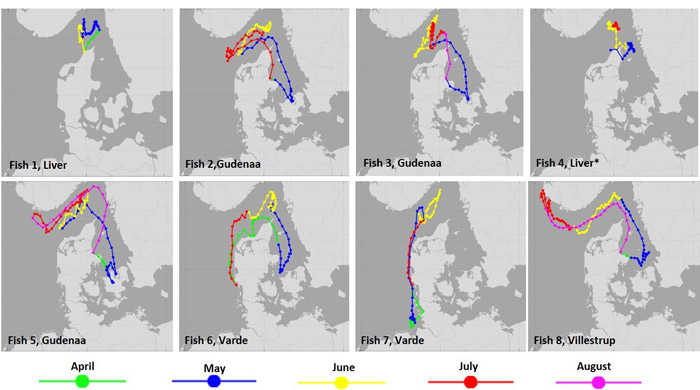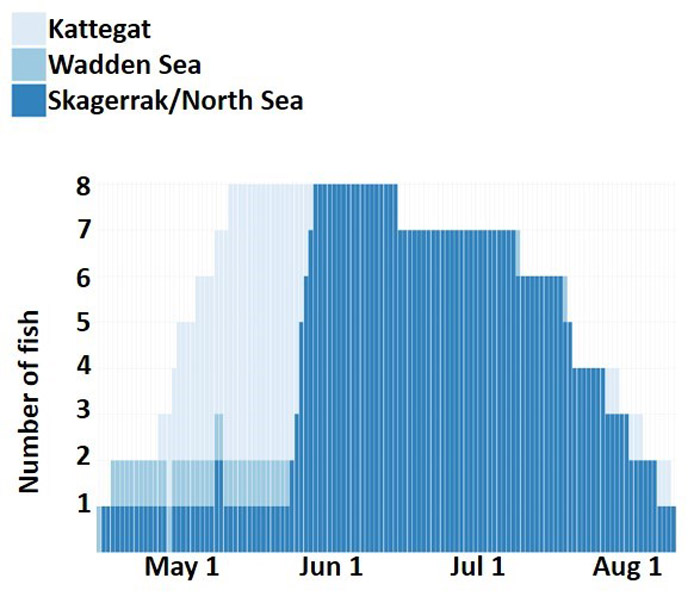Where do sea trout go after they enter the sea? Migrations of Danish sea trout were directed into shallow or stratified areas with lower salinity during spring and into more open and well-mixed areas during summer according to a new study from DTU Aqua. The results shed new light on the mysterious marine migration behaviour of sea trout.
Understanding fish migrations is paramount for management and conservation purposes and for our general understanding of marine ecosystems. Researchers from DTU Aqua in Denmark therefore applied a Hidden Markov Model (HMM) on temperature and depth records from data storage tagged adult sea trout to reconstruct the migration routes of the fish.
The fish spent a mean of 96.1 days at sea and exhibited a mean horizontal progression of 16 km d-1 during this period according to the model. Migrations were confined to shelf seas with all daily positions being within 100 km from the nearest shoreline, but migrations up to 580 km away from the natal river mouth occurred.
During the first weeks at sea in April or May, the fish resided in or actively migrated into shallow or stratified areas where the water was heating up fast. This migration also brought the fish into less saline areas. The fish left these areas as spring turned to summer, after which they resided in more open and well-mixed marine areas until their return to the rivers.

The results provide a geographic explanation to the previously published raw temperature data. These suggested that a movement from relatively warm areas during spring to relatively cold areas during summer had occurred. This movement coincided with the fish residing in temperatures close to or within the range reported as optimal for growth in the species during most of their marine period.
Although several factors could drive the marine migration strategies of sea trout, the coinciding movements reflected in the reconstructed tracks of the Danish trout suggest that habitat selection does occur. Sea trout is famous for its adaptability, and the relatively long migrations in the seas surrounding Denmark may reflect adaptations to local conditions in the region.
These results highlight how studies combining data storage tags and HMMs could shed new light on factors shaping the marine migration strategy of fish in areas inaccessible with other telemetry types.

Link to the scientific publication about the modelled migration routes
Link to the scientific publication with the raw temperature and depth data
Af Martin Lykke Kristensen, Henrik Baktoft, Finn Sivebæk og Kim Aarestrup, DTU Aqua, Institut for Akvatiske Ressourcer.